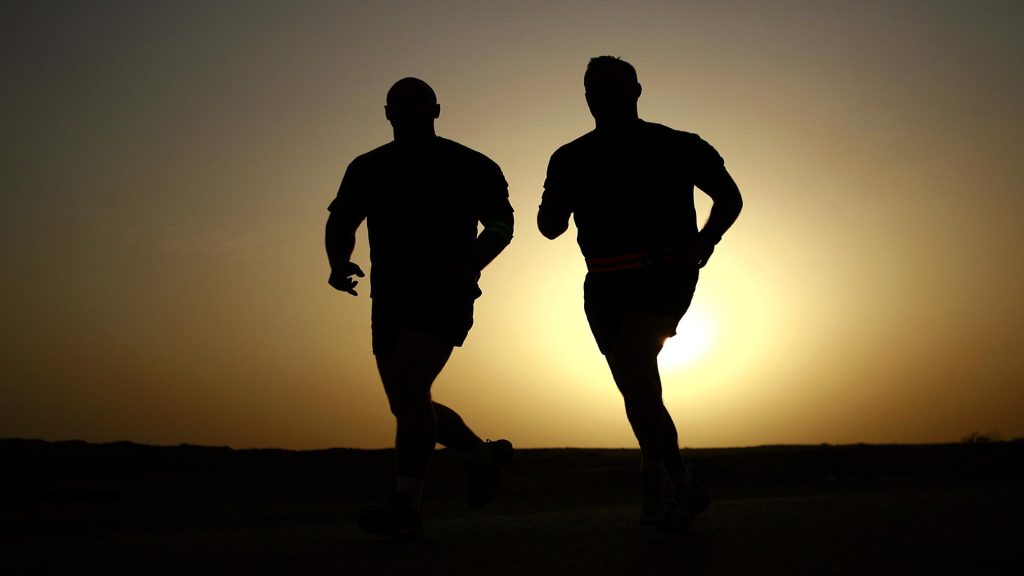
Outline
- Introduction
- Understanding Adaptive Fitness Equipment
- The Benefits of Adaptive Fitness Equipment
a. Increased Accessibility
b. Enhanced Safety
c. Improved Physical Fitness
d. Mental Health Benefits - Popular Types of Adaptive Fitness Equipment
a. Adaptive Exercise Machines
b. Modified Cardio Equipment
c. Accessible Strength Training Tools
d. Adaptive Sports Equipment - How to Choose the Right Adaptive Fitness Equipment
a. Assessing Individual Needs and Abilities
b. Consulting with Professionals
c. Considering Available Space and Budget - Tips for Using Adaptive Fitness Equipment Safely
a. Warm Up and Cool Down
b. Start Slow and Progress Gradually
c. Proper Technique and Form
d. Listening to Your Body - The Future of Adaptive Fitness Equipment
a. Advancements in Technology
b. Customization and Individualization
c. Inclusion and Integration - Frequently Asked Questions
a. What is adaptive fitness equipment?
b. Who can benefit from using adaptive fitness equipment?
c. How does adaptive fitness equipment improve physical fitness?
d. Are there any safety considerations when using adaptive fitness equipment?
e. Where can one find and purchase adaptive fitness equipment? - Conclusion
Adaptive Fitness Equipment: Enhancing Accessibility and Inclusivity
� Adaptive Fitness Equipment: Enhancing Accessibility and Inclusivity
� Fitness
� Adaptive Fitness
� Discover the benefits and types of adaptive fitness equipment that enhance accessibility and inclusivity in the fitness industry.
Adaptive fitness equipment is revolutionizing the way individuals with different physical abilities participate in exercise and physical activity. By catering to the needs of people with disabilities or other limitations, adaptive fitness equipment promotes inclusivity and enables individuals to lead active and healthy lifestyles. In this article, we will explore what adaptive fitness equipment is, its benefits, popular types, tips for choosing and using it safely, and the future trends in this field.
Understanding Adaptive Fitness Equipment
Adaptive fitness equipment refers to specially designed exercise tools and machines that accommodate individuals with physical disabilities or limitations. It aims to provide equal opportunities for people to engage in physical activity regardless of their abilities. This equipment is equipped with features that modify its design, functionality, or accessibility to suit the needs of a diverse population.
The Benefits of Adaptive Fitness Equipment
Increased Accessibility
One of the primary benefits of adaptive fitness equipment is increased accessibility. Traditional gym equipment is often designed with standard dimensions and functionalities that may limit individuals with disabilities from engaging in certain exercises. Adaptive fitness equipment addresses these limitations by incorporating adjustable features, making it possible for people with different abilities to use the equipment comfortably.
Enhanced Safety
Safety is a crucial aspect of any fitness routine, and adaptive fitness equipment prioritizes user safety. These specially designed tools come with additional support mechanisms such as stabilizing handles, seat belts, or harnesses to ensure individuals can perform exercises safely. Enhanced safety features reduce the risk of injury and provide peace of mind for both users and their caregivers or trainers.
Improved Physical Fitness
Adaptive fitness equipment promotes improved physical fitness for individuals with limitations. It allows targeted muscle engagement, range of motion exercises, and cardiovascular workouts that cater to specific needs. Regular use of adaptive equipment can lead to improved strength, flexibility, endurance, and overall physical well-being.
Mental Health Benefits
Engaging in regular exercise has numerous mental health benefits, and adaptive fitness equipment enables individuals with disabilities to experience these advantages as well. Physical activity releases endorphins, improves mood, reduces stress levels, and boosts self-esteem. The inclusive nature of adaptive equipment helps individuals feel empowered, enhancing their overall mental well-being.
Popular Types of Adaptive Fitness Equipment
Adaptive Exercise Machines
Adaptive exercise machines focus on providing a wide range of accessible options for both cardiovascular and strength training exercises. These machines often have adjustable seats, handles, and supports to accommodate individuals with varying needs. Examples include seated ellipticals, accessible treadmills, and modified rowing machines.
Modified Cardio Equipment
Some individuals may require modifications for traditional cardio equipment to make them usable. Adaptive modifications can include adding stability features, changing handle grips, or incorporating assistive devices to allow individuals with limited mobility to engage in cardio exercises. Modified stationary bikes, step machines, and hand ergometers are some examples of modified cardio equipment.
Accessible Strength Training Tools
Strength training is an essential component of any fitness routine, and adaptive fitness equipment ensures it is accessible to all. These tools focus on providing adaptations such as adjustable resistance, accessible handles, and supportive seating to facilitate strength training exercises. Examples include adjustable weight machines, resistance bands with handles, and grip aids.
Adaptive Sports Equipment
Adaptive sports equipment caters to individuals who want to participate in sports despite their limitations. It includes specialized equipment like adaptive wheelchairs, handcycles, sleds, and prosthetics designed to enable individuals to engage in various adaptive sports such as wheelchair basketball, adaptive skiing, wheelchair rugby, and more.
How to Choose the Right Adaptive Fitness Equipment
Choosing the right adaptive fitness equipment involves considering individual needs, consulting professionals, and assessing available resources. Here are some tips to help you make an informed decision:
Assessing Individual Needs and Abilities
Before purchasing adaptive fitness equipment, it is crucial to understand the specific needs and abilities of the individual who will be using it. Consider factors such as mobility, strength, balance, and any specific requirements related to the individual's disability or condition. This assessment will help determine the specific features and modifications needed in the equipment.
Consulting with Professionals
Consulting with healthcare professionals, such as physical therapists or rehabilitation specialists, can provide valuable insights and guidance in selecting the right adaptive fitness equipment. These professionals can assess the individual's abilities, recommend suitable equipment, and provide instructions on correct usage.
Considering Available Space and Budget
Take into account the available space where the equipment will be used. Measure the dimensions and ensure there is ample space for safe and comfortable use. Additionally, consider the budget constraints and explore various equipment options that fit within the allocated budget. Research different suppliers and brands to find the best value for money.
Tips for Using Adaptive Fitness Equipment Safely
To ensure a safe and effective fitness routine, following these tips when using adaptive fitness equipment is essential:
Warm Up and Cool Down
Always start the workout session with a proper warm-up to prepare the body for exercise. Perform gentle stretches and mobility exercises to increase blood flow and loosen up the muscles. Similarly, end the session with a cool-down routine to gradually decrease the heart rate and prevent post-exercise soreness.
Start Slow and Progress Gradually
If you are new to adaptive fitness equipment, begin with low-intensity exercises and gradually increase the difficulty level as your body adapts. Overexertion can lead to injury, so listen to your body's cues and progress at a pace that feels comfortable.
Proper Technique and Form
Regardless of the equipment used, focusing on proper technique and form is crucial. Improper form can lead to strains, sprains, or other injuries. Seek guidance from professionals or watch instructional videos to learn the correct technique for each exercise.
Listening to Your Body
Each individual's body is unique, so pay attention to any pain, discomfort, or unusual sensations during the exercise. If something doesn't feel right, stop and consult a healthcare professional or trainer for advice.
The Future of Adaptive Fitness Equipment
The future of adaptive fitness equipment looks promising, with advancements in technology, customization, and a greater focus on inclusion. Here are some trends shaping the future of this field:
Advancements in Technology
Technological innovations, such as virtual reality and wearable devices, are being integrated into adaptive fitness equipment. These advancements enable more engaging and interactive workouts while catering to individuals with different abilities.
Customization and Individualization
As the fitness industry becomes more aware of diverse needs, adaptive fitness equipment is being designed to provide heightened customization options. Users can personalize settings, resistance levels, and adaptability to meet their specific requirements.
Inclusion and Integration
There is a growing emphasis on inclusivity in fitness spaces, and adaptive fitness equipment plays a vital role in creating an inclusive environment. Gyms and fitness facilities are striving to provide a range of adaptive equipment options, knowledgeable staff, and accessible spaces to ensure people of all abilities can participate.
Frequently Asked Questions
What is adaptive fitness equipment?
Adaptive fitness equipment refers to specially designed exercise tools and machines that cater to individuals with physical disabilities or limitations. It provides modifications or additional features to enhance accessibility and inclusivity in fitness routines.
Who can benefit from using adaptive fitness equipment?
Anyone with physical disabilities, limitations, or conditions that affect their mobility can benefit from using adaptive fitness equipment. It enables individuals to engage in physical activity, improve fitness, and experience the associated health benefits.
How does adaptive fitness equipment improve physical fitness?
Adaptive fitness equipment allows individuals with limitations to perform targeted exercises that promote strength, flexibility, cardiovascular endurance, and overall physical well-being. It enables customized workouts tailored to specific needs, which ultimately lead to improved fitness levels.
Are there any safety considerations when using adaptive fitness equipment?
Yes, safety considerations are essential when using adaptive fitness equipment. It is crucial to start with proper warm-up and cool-down routines, progress gradually, maintain correct technique and form, and listen to your body for any signs of discomfort or pain.
Where can one find and purchase adaptive fitness equipment?
Adaptive fitness equipment can be found online through specialized retailers, adaptive sports organizations, or local fitness equipment suppliers. Consulting professionals or rehabilitation specialists can also provide recommendations on reputable sources for purchasing adaptive equipment.
Conclusion
Adaptive fitness equipment plays a significant role in enhancing accessibility, inclusivity, and the overall well-being of individuals with physical disabilities or limitations. By addressing the unique needs and abilities of diverse populations, this equipment promotes active lifestyles, improved physical fitness, and contributes to a more inclusive fitness industry. With continuing advancements and increased awareness, the future of adaptive fitness equipment is set to create even greater opportunities for individuals to engage in physical activity and lead healthier lives.
� Adaptive Fitness Equipment: Enhancing Accessibility and Inclusivity
� Fitness
� Adaptive Fitness
� Discover the benefits and types of adaptive fitness equipment that enhance accessibility and inclusivity in the fitness industry.
Thank you for reading. For more insights, visit our #healthzone#3.com/blog">BLOG. We appreciate your support!


